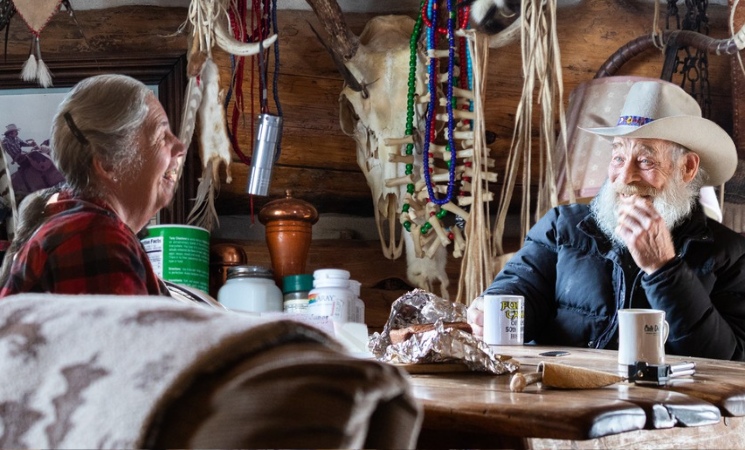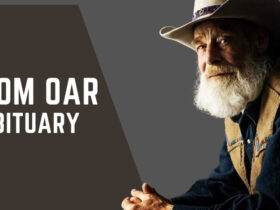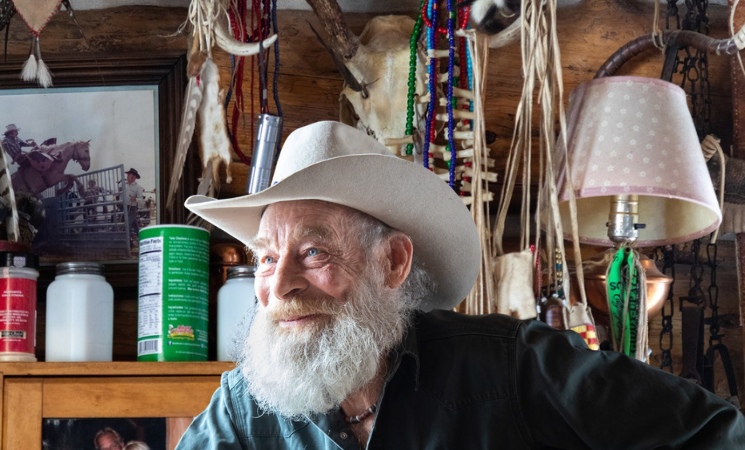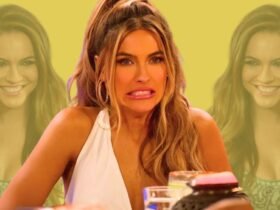The mountains are calling, and I must go. — John Muir.
The words stand boldly above Tom Oar’s home, a quiet declaration of the life he has built. In a world that has long surrendered to the convenience of modern comforts, Oar remains a relic of the past – a man who lives by his own hands, in rhythm with the untamed wilderness.
For decades, he has walked a path few dare to tread. His life has been carved not from ease but from sheer will, from the unyielding land of Montana to the bone-crushing world of rodeo. To know Tom Oar is to know a man who never looked for shortcuts, never sought fame, and never once let the world tell him who he ought to be.
And if there’s one thing he’s certain of, it’s this: he wouldn’t trade a single day of it.
Tom Oar’s Early Life and the Cowboy Spirit
As of early 2025, Tom Oar is 82 years old. This information was highlighted in a Facebook post celebrating his 80th birthday, where friends and family organized a surprise party in his honor. The post, shared by the official Mountain Men page, showcased Tom’s enduring spirit and the affection held for him by those close to him.
Tom Oar was born in 1943 in Rockford, Illinois, but the wild was always in his blood. His father, Chike Oar, had once performed in the Wild West Shows, reenacting the frontier days before television made cowboys into Hollywood legends. Tom and his older brother weren’t interested in just watching – they wanted to live it.
“My dad was a real horseman, and he passed that on to my brother and me,” he recalls.
At just seven years old, he was already learning the fine art of trick riding, flipping onto a galloping horse with the same reckless confidence that would later define his career.
Danger was never a deterrent. If anything, it fueled him. By 15, his thirst for adventure led him to hitchhike across states to enter rodeos, with nothing but a bull rope, a rigging bag, and his mother’s faith in him.
“She drove me to the edge of town, dropped me off, and that was that. I went and rode.”
That was the beginning of a career that would take him to the highest ranks of the International Rodeo Association. Year after year, he proved himself in the arena, facing down the wild, thrashing power of untamed animals.
But rodeo is unforgiving. And for Tom, the price of it all would come crashing down one fateful night.
But with fame comes speculation, and recently, false reports of his passing have spread online, leaving fans worried. The truth? Tom Oar is still very much alive, spending his days the way he always has.
Tom Oar’s Near-Fatal Rodeo Accident and Turning Point
On Valentine’s Day, 1970, under the bright lights of an arena, Tom Oar climbed onto the back of a massive bull named Woolly Bugger. The chute creaked open, and in an instant, chaos erupted.
The bull launched itself into the air, its skull slamming into Tom’s with the force of a freight train. The impact knocked him unconscious on the spot, but the real terror had just begun. His hand was still locked into the rope, binding him to the beast as it bucked and twisted in a blind fury.
“My legs were underneath his hind legs … he was bucking and stepping on me quite hard.”
For two minutes – the longest two minutes of Nancy Oar’s life – she watched helplessly as her husband was thrashed like a ragdoll. Finally, the rope was severed. Tom was carried out on a stretcher, slipping in and out of consciousness. He wouldn’t wake fully for three hours, his body covered in bruises, his skull rattled by a severe concussion.
He survived.
But the bull did not.
“They told me that old Woolly Bugger, he died two weeks later,” Tom said, a cowboy’s twinkle in his eye. “I think I gave him a concussion, too.”
He rode again. Of course, he did. But something had changed. The fire burned a little differently, the wins felt a little emptier. And so, after decades in the arena, he made a decision.
“It was time for me to quit, you know, so I did.”
From Rodeo to the Montana Wilderness: Tom Oar’s New Life
For most men, retirement means slowing down. For Tom and Nancy Oar, it meant starting over.
For years, they had traveled to Montana’s Yaak River Valley in the summers, following the rodeo trail west. The mountains had always called to them. And in 1981, they answered.

Packing everything they owned into an old pickup truck, they left behind the familiar world of Illinois for a life of uncertainty, wilderness, and absolute freedom.
“We had no idea what we were getting into or how I was gonna make a living. But I just had a feeling that, by God, I can do it.”
And he did. But the land did not make it easy.
The first winter nearly broke them. The cold settled deep into their bones, the howling winds tested their resolve, and doubts crept in with every frostbitten morning. Surviving the wild was a far greater challenge than any bull he had ever faced.
Then, one day, in a small Indian store in Billings, fate intervened.
There, tucked away on a shelf, sat a 16-page book. It cost $3 and contained the ancient secrets of brain tanning – the very method that would shape his future.
“We just stopped and went in, and there it was in black and white; told you how the Indians brain-tanned.”
That small, seemingly insignificant book transformed him. His hands, once calloused from gripping ropes, became instruments of an ancient craft. He tanned hides the way Native Americans had for centuries, learning to perfect a lost art.
Before long, his buckskin clothing became legendary among fellow trappers and survivalists. The Black Powder Rendezvous – gatherings of those who lived as mountain men once did – became his marketplace.
And in the process, Montana became more than his home. It became his destiny.
A Man Made for the Mountains
Then came Mountain Men.
In 2012, the History Channel cast Tom Oar in a documentary series about those who still lived by the laws of the wild. They didn’t make him famous – he already was, in his own right. But they brought his story to the world.
Suddenly, the quiet life he had built became the subject of admiration and curiosity. Tourists traveled miles just to meet him. Did he mind?
Not really.
“I’d rather people like me than hate me,” he says with a shrug.
But when the cameras left, when the visitors went home, Tom Oar remained exactly as he had always been – working, crafting, and living without apology.
At 81 years old, he may have left the rodeo behind, but the mountains still hold him. His hands still tan hides, his heart still beats for the land, and his spirit remains as wild as the first horse he ever rode.
A life lived on his own terms.
And as long as he can still do it – hell, he’s gonna do it.
Family and Siblings
Tom Oar has an older brother named Jack Oar, who has occasionally appeared alongside him on Mountain Men. Jack is known to be more reserved and camera-shy compared to Tom. There is limited public information about other siblings or family members.













